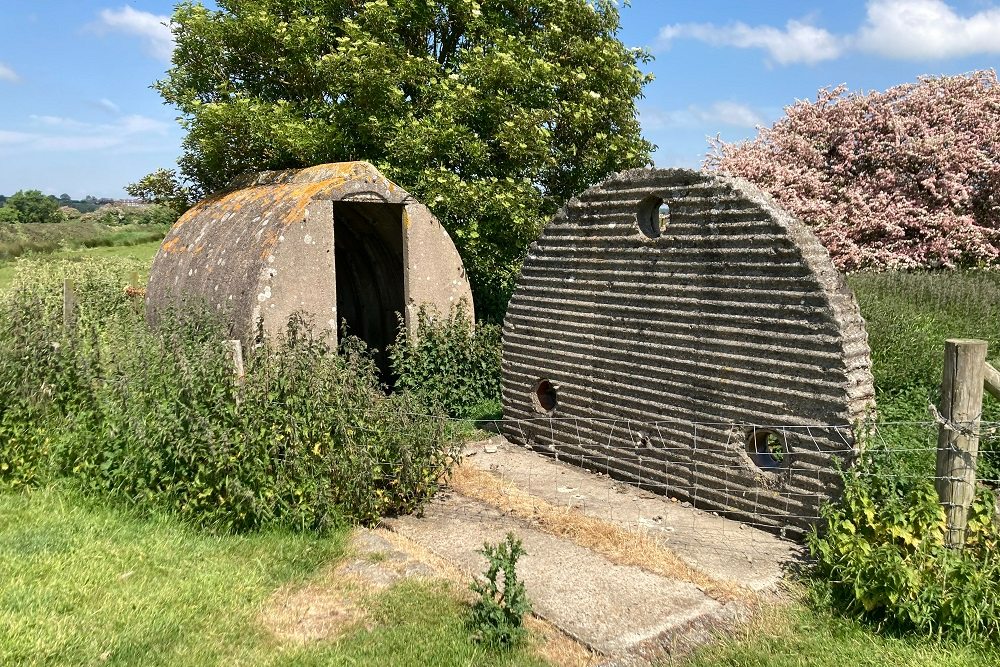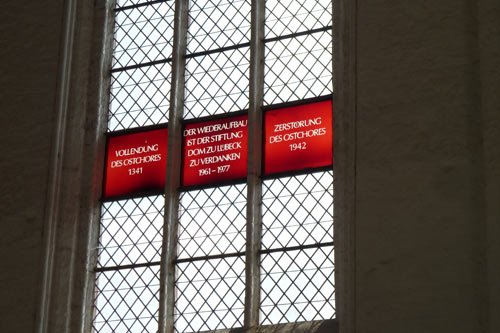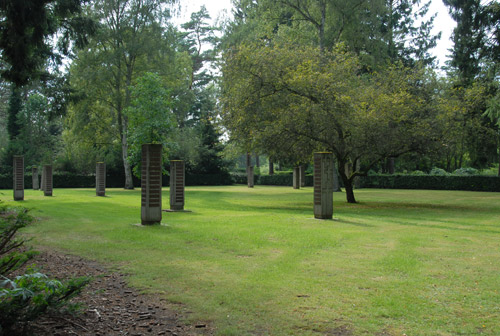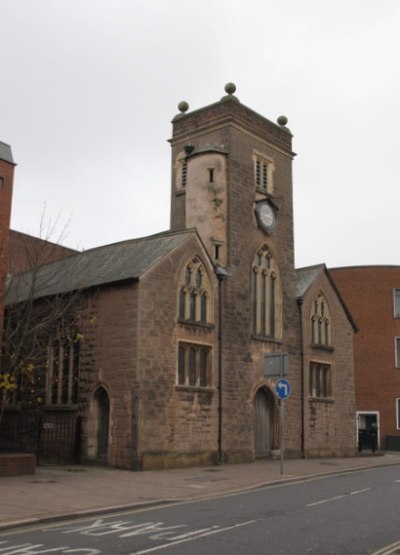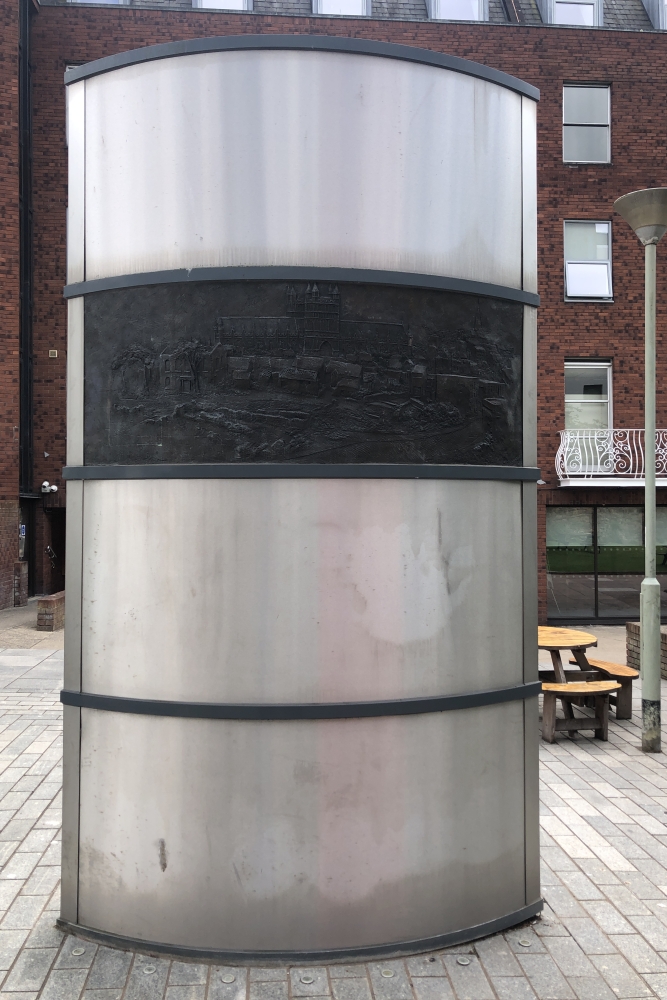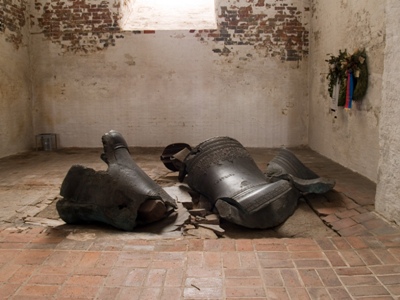Baedeker Raids on British cities
Baedeker travel guide
Karl Baedeker started publishing travel guides in 1832. He was not the first one to do so, but his meticulousness and the upcoming tourism ensured that his guides became popular. The contents of the travel guide today are similar to the contents of the past; a description of the different options to reach a specific destination, ratings of various types of accommodations and eateries, detailed maps, interesting buildings, museums, and local attractions.
Travelling and getting acquainted with new cultures are in high contrast with all-destructive bombings of different cities. Yet the travel guide and these bombardments are linked to each other. The question is how?
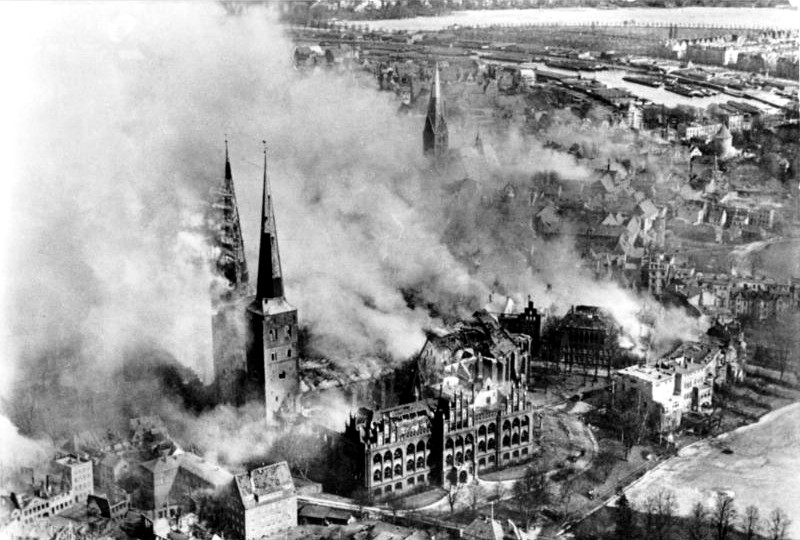
The Dom of Lübeck on fire after being bombed, 1942. Source: Bundesarchiv, Bild 146-1977-047-16 / CC-BY-SA 3.0
Bombing of Lübeck
During the early hours of March 29 1942, the German city Lübeck is being bombed. Prior to this attack, apart from a few sporadic bombardments, the damage caused to the city remained considerably low. Of course the air force was at war. The Luftwaffe did not save their bombs during the German attempts to occupy Poland, Belgium and France. Consequently, the ravage caused to Warsaw and Rotterdam was immense.
Between September 1940 and May 1941, England, especially London, suffered the same fate during the so-called Blitz. The Royal Air force in her turn bombed her targets in Occupied Europe and Germany. These attacks, however, were small-scale and mostly strategic; they were targeted at industry, traffic junctions, and harbours. This strategy changed when Air Marshall Arthur Harris became commander of the Bomber Command in February 1942. His vision was different; to demoralise the citizens by turning the cities into wastelands became the new objective. Whole city districts and centres became targets. The distinction between citizen and soldier, strategic and civil targets disappeared. Nobody would be safe.
The bombing of Lübeck involved 234 bombers that attacked in two sorties. The first contained explosives to "open" up buildings, the second incendiary bombs to burn the city. This concept was efficient and ensured, apart from total destruction, enormous fires in the centre which buildings were mostly made out of wood. 62% of these buildings were heavily or relatively damaged, 301 citizens died and 15.000 people lost their homes.
There was little German defence with regard to anti-aircraft weapons or fighters due to the fact that, unlike the Ruhr area or other industries, the city was not marked as an important target.
Hitler versus Churchill
Adolf Hitler was, to put it mildly, not amused and gave order to retaliate. British cities would not be safe from the Luftwaffe’s bombs regardless of historical significance, cultural value or their inhabitants. On the opposite, these components formed greater reason to attack. Joseph Goebbels, the minister of propaganda, discusses this subject in his diary on the 27th of April 1942 after an attack on Rostock:
"I think it absolutely necessary, especially now, that we continue our acts of retaliation, and it is also in my opinion that one cannot achieve much by attacking armament centers; we need to copy the attacks of the Englishmen on cultural centers, especially those places that contain little anti-aircraft defences. One has to attack such cities twice, thrice in a row and destroy them completely. Then, these Englishmen will be deterred from pursuing their terrorist efforts to frighten us."
Later, he writes: "there is no other option to rationalize these Englishmen. They are the sort of people that only understand reason after complete demolition."
The attitude did not differ on the other side of the North Sea. Winston Churchill wrote in a letter to his son: "During this summer, one German city after another will face the worst punishment that has yet been inflicted in this war." As a result, the citizens of the smaller, tourist cities in England and Germany fell victim to the ravages inflicted by these two great leaders.
Baedeker Raids
On a German press conference held on the 24th of April 1942 for the international press, the legend arose of what we nowadays call the Baedeker Raids or Baedeker Blitz. Four days later, a Swedish newspaper, the Stockholm Tidningen, publishes a report. A member of the Aussenministerium, the Ministry of Foreign Affairs, baron Gustav Braun von Sturm is being quoted as:
"We shall go out and bomb every building in Britain marked with three stars in the Baedeker Guide."

The Dom of Lübeck on fire after being bombed, 1942. Source: Bundesarchiv, Bild 146-1977-047-16 / CC-BY-SA 3.0
The previous day, the Luftwaffe bombed Exeter. Between April 23rd and May 3rd, the historical cities Exeter, Bath, Norwich, Canterbury and York fell victim to multiple attacks. All these cities were of little strategic significance, but featured universities, Roman and medieval buildings, and local attractions such as cathedrals. Moreover, they were mentioned in the Baedeker guide.
Let us take Exeter as an example. The city would be bombed 19 times. On August 9 1940 the local newspaper had written that the ravage caused by the German bombs was limited to a canary dying from shock and a few chickens. However, the damage inflicted upon the city significantly increased during the night between May 3 and May 4, when the Luftwaffe released 75 tons of bombs and 10.000 incendiary bombs; 161 people died, 476 were injured, and 29.65 acres of the city was being destroyed, all caused by "just" 20 bombers. Afterwards the German radio broadcasted:
"Exeter is the jewel of the West; we destroyed that jewel and the Luftwaffe will return to finish its job."
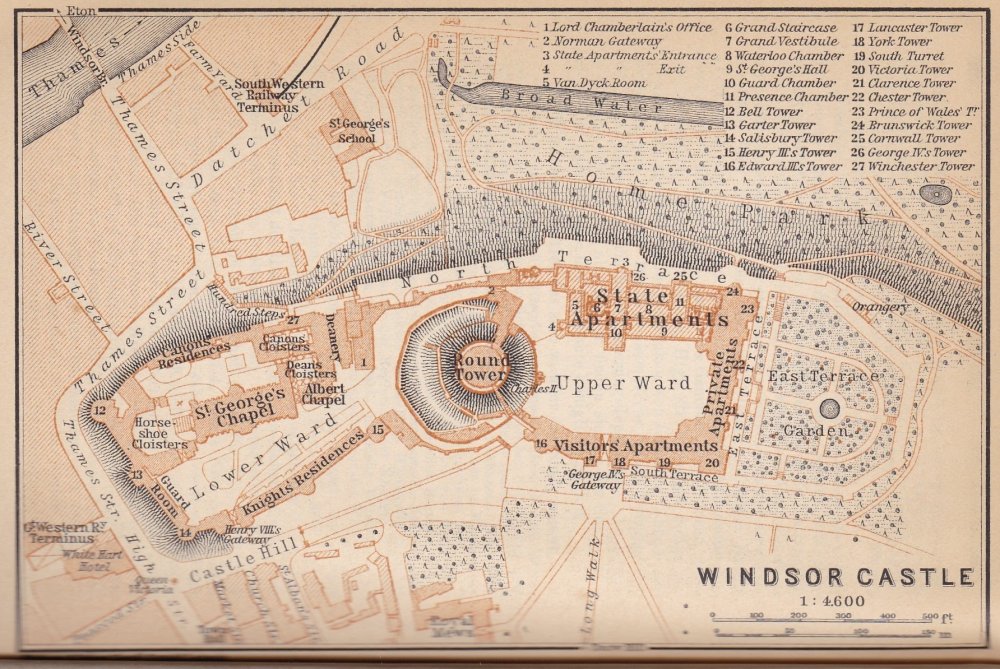
Map featured in the Windsor Castle guide where, during the Second World War, the British royal family resided. Despite the Luftwaffe’s awareness of the location, the castle remained save. Source: Collection Maurice Laarman

Along with bombs, the double-sided pamphlet was a beloved instrument to influence public opinion. Released by airplanes, the enemy sometimes only needed to be confronted with the painful truth. Two examples of pamphlets written in German released by the Allied Forces in Germany are shown above and below. These perfectly portray the message that people wanted to convey; it was Germany’s turn! A laughing Göring after the attack on cities of the enemy starting with Warschau in September 1939 and Rotterdam in May 1940. The atmosphere quickly changes now that Germany has become the target. The last picture of Düsseldorf makes reference to the attacks on the city in August and September 1942. Source: Collection Maurice Laarman
England’s Answer
The Royal Air Force, however, also had to finish its job. The first three years of war were relatively uneasy with regard to the air raids on Germany. This soon would change.
The Baedeker Raids on British cities were just pinpricks compared to what the Royal Air Force planned for the upcoming months. Each plane that was able to release bombs featured in the so-called 1000 Bomber Raids; 1047 on Cologne (May 30/31 1942, operation Millennium), 956 on Essen (June 2/3) and another 1006 on Bremen (June 25/26). The devastation was immense and Germany suffered even more; the Luftwaffe grew weaker due to the losses suffered during the attacks on England, and the German empire had to defend itself against a never decreasing stream of bombs that burned cities, infrastructure, factories, harbours, oil-installations and other remaining valuables of the empire. Thousands of Luftschutzbunkers were built to offer shelter to the population and labourers, a cordon of Flak batteries was constructed and the Luftwaffe organisation experienced a great expansion to improve its defence. Despite the fact that these projects were successful, it was not enough. Three more years of devastating air warfare followed during which Germany remained the target of many bombardments. Of course, Hitler was annoyed. He rather would have seen his enemies in ruins.
Balance
When the balance was made up in 1945, Germany had been subjected to 1,415,745 tons of bombs, bombs that caused 7,5 million people to lose their homes, killed between 400.000 and 600.000, and injured a minimum of 780.000. In comparison, 60.595 died in England due to the bombs released by Germany, while in France, 67.078 died because of the bombs released by the Allied Air Forces.
Today, more than 70 years later, the traces of these bombings are still visible in German cities. Buildings initially lost are being reconstructed, such as the Frauenkirche in Dresden or a neighbourhood in Frankfurt’s city centre. Bombs are still found and have to be defused. The deaths, devastated lives, traumatized people, and disabled remain a permanent scar. Fortunately, travel guides today serve their original purpose again, and do not operate as target indicators anymore. The current travel guides of European cities acknowledge the remains of the Second World War and its museums as local attractions. The circle is complete.
Definitielijst
- Bomber Command
- RAF unit which controlled strategic and sometimes tactical bombing (as in Normandy)
- Flak
- Flieger-/Flugabwehrkanone. German anti-aircraft guns.
- Luftwaffe
- German air force.
- propaganda
- Often misleading information used to gain support among supporters or to gain support. Often used to accomplish ideas and political goals.
- strategy
- Art of warfare, the way in which war should be conducted in general.
Information
- Article by:
- Maurice Laarman
- Translated by:
- Mariska Buurlage
- Published on:
- 20-03-2019
- Last edit on:
- 30-09-2024
- Feedback?
- Send it!
Related sights
Related books
Sources
- White, Matthew, Twentieth Century Atlas – Death Tolls: United Kingdom (4 juni 2009).



